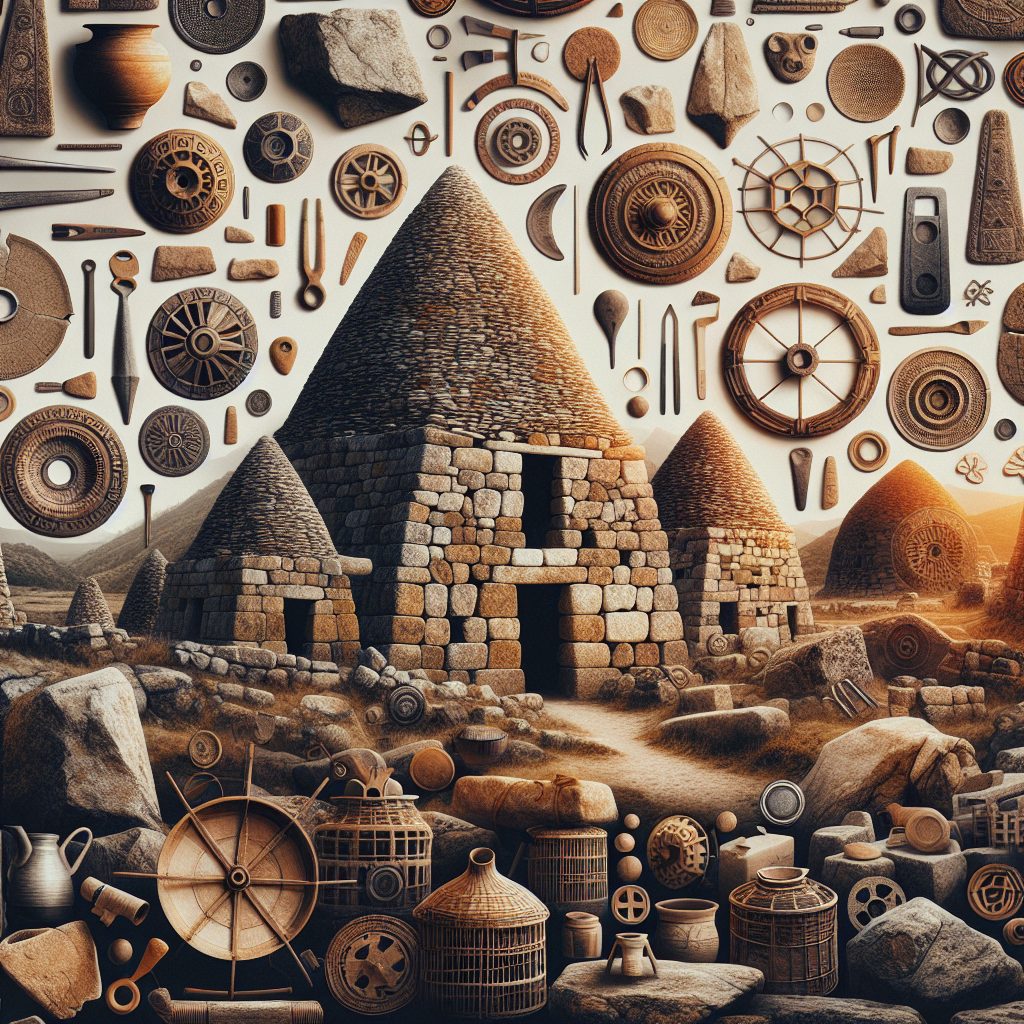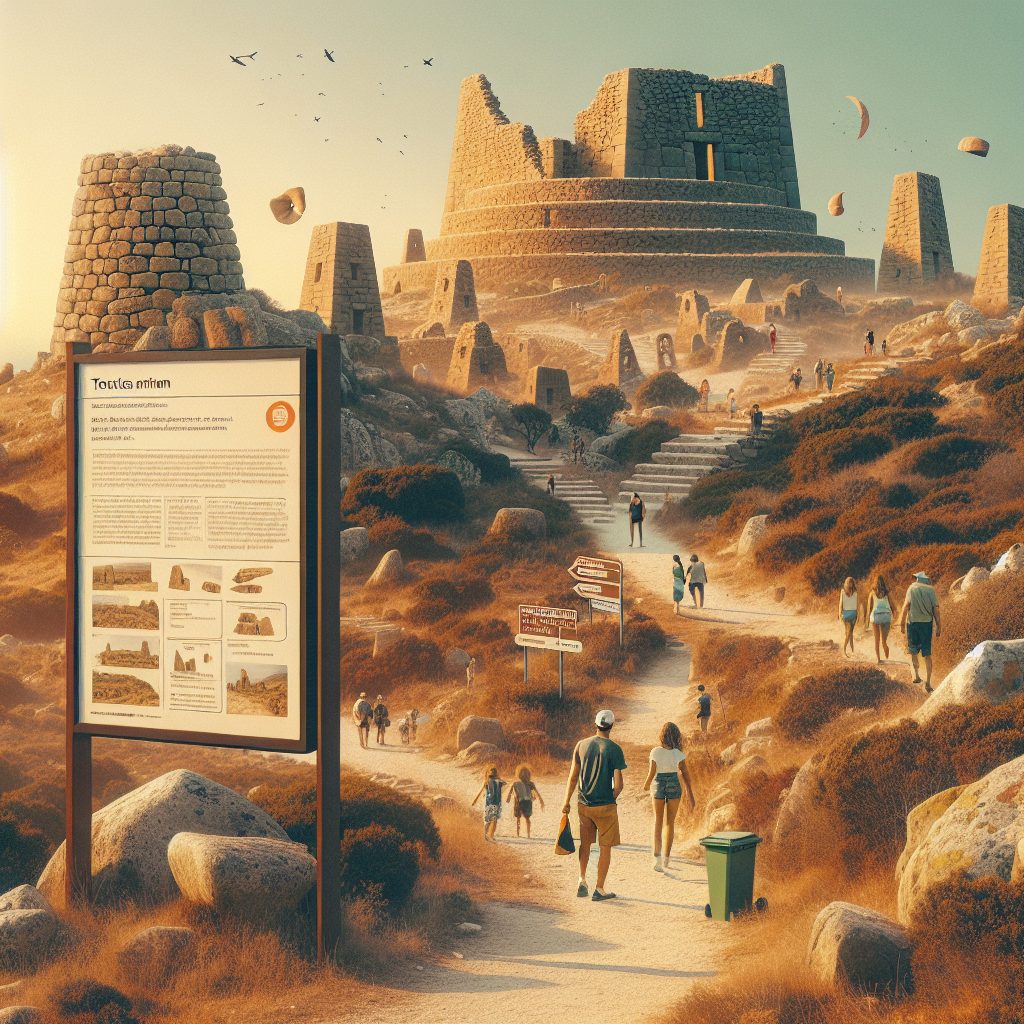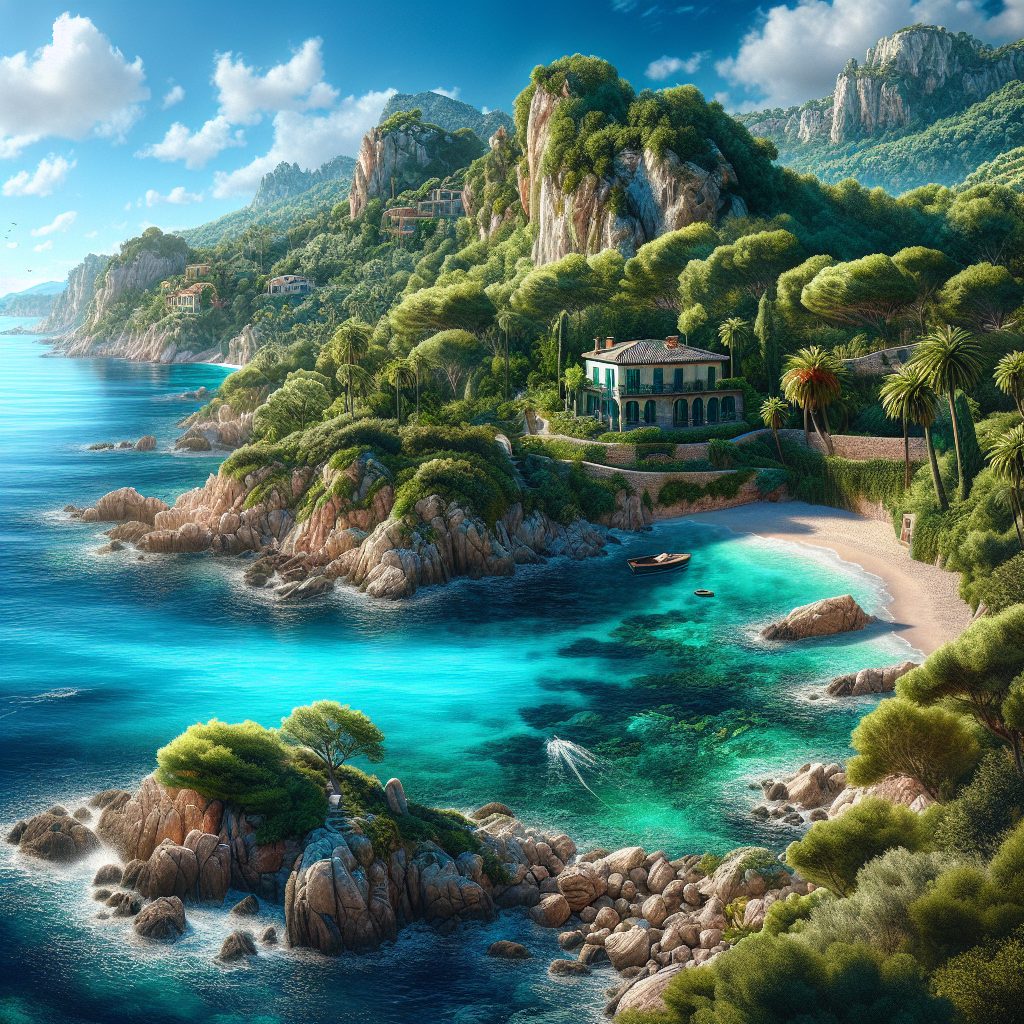Nuraghe Symbolism refers to the hidden meanings and cultural significance associated with the ancient stone towers that are scattered throughout the island of Sardinia, Italy. These majestic structures, dating back to the Bronze Age, hold a great deal of mystery and intrigue. The term “nuraghe” itself comes from the Sardinian word “nurra,” which means “heap of stones,” highlighting the primary characteristic of these monuments. However, beyond their impressive architecture, nuraghes also serve as powerful symbols of identity, social hierarchy, and religious beliefs within Sardinian culture.
One of the most fascinating aspects of Nuraghe Symbolism is the way these ancient structures played a crucial role in shaping and defining the Sardinian identity. The abundance of nuraghes on the island is a testament to their significance in the collective memory of the Sardinian people. These imposing towers, with their unique architectural features, bear witness to a civilization long gone but not forgotten. Their presence embodies the resilience and endurance of the Sardinian culture, which has stood the test of time.
In the next part of this article, we will delve deeper into the various layers of Nuraghe Symbolism. We will explore how these stone towers were not just functional structures but also intricate symbols of power and hierarchy within ancient Sardinian society. Additionally, we will analyze the religious and spiritual connotations associated with nuraghes, uncovering the significance they held as sacred spaces. Join us as we unlock the secrets and delve into the rich symbolism surrounding these enigmatic structures.
Key Takeaways
1. Nuraghe structures in ancient Sardinia were built as defensive towers and also served as a symbol of social status and power for local tribes.
2. The dense concentration of nuraghe structures on the island suggests a highly organized and hierarchical society, with each tower representing the authority and dominance of a specific clan or family.
3. Nuragic civilization, which thrived between 1800 and 500 BCE, considered the nuraghe as a central element of their religious and political practices, indicating a strong connection between religious beliefs and power structures.
4. The unique architectural features of nuraghe, including their circular or trapezoidal shapes, height, and complex internal designs, underscore the sophistication and engineering knowledge possessed by the Nuragic people.
5. The intricate symbolism and decorative motifs seen in nuraghe, such as spiral designs and animal and human figures depicted on stone sculptures, reveal the spiritual and cultural values of the ancient Sardinians, highlighting their reverence for nature and belief in supernatural powers.
What is the Symbolism Behind Nuraghe Structures in Sardinia?
The Origins of Nuraghe Structures
The Nuraghe structures, found exclusively in the Italian island of Sardinia, are mysterious ancient megalithic towers dating back to the Bronze Age. These remarkable structures, which are exclusive to this region, have intrigued historians, archaeologists, and experts for centuries. They serve as a testament to the advanced architectural and engineering skills of the Nuragic civilization that inhabited Sardinia.
The Importance of Nuraghe Symbolism
Nuraghe structures hold significant symbolism for the Nuragic people and are believed to represent various cultural, religious, and societal aspects of their civilization. The intricate designs and construction techniques used in these ancient towers provide valuable insight into the beliefs, values, and traditions of the Nuragic community.
The Architecture of Nuraghe Structures
Nuraghe towers are characterized by their unique cylindrical shape, built using large limestone blocks without any use of mortar. They often feature multiple levels, with the interior divided into chambers connected by narrow corridors and staircases. The design and layout of each Nuraghe vary, reflecting the diversity and ingenuity of the Nuragic civilization.
Symbolic Elements and Interpretations
The symbolism within Nuraghe structures can be examined through several elements:
1. Central Tower
The central tower of a Nuraghe is considered the most important part and is believed to have played a crucial role in their society. Some interpretations suggest it could have been a sacred space for religious ceremonies, possibly representing a connection between heaven and earth.
2. Tholos and Corbelled Roofs
Tholos and corbelled roofs are common architectural features found in Nuraghe structures. The intricate stone arches and overlapping stones create a visually striking effect. It is speculated that the shape of these roofs could represent fertility or the cycles of nature.
3. Spiral Staircases
Many Nuraghe structures have spiral staircases that lead to different levels within the towers. These staircases are believed to symbolize journeys of initiation or the spiritual ascendance of individuals.
4. Defensive Intentions
The defensive nature of Nuraghe structures cannot be overlooked. With their strategic locations, complex layouts, and defensive features such as narrow entranceways and hidden chambers, these towers were likely constructed for protection against external threats. The defensive symbolism of Nuraghe structures represents the Nuragic people’s desire to safeguard their communities and preserve their way of life.
Nuraghe Symbolism: Unraveling the Mysteries
The true meanings behind the Nuraghe symbolism remain a subject of speculation and ongoing research. These ancient structures continue to captivate the imagination of historians and archaeologists, enticing them to delve deeper into the rich history and symbolism of the Nuragic civilization.
Discover the Symbolic Secrets of Nuraghe Structures
- How did the Nuragic community use the central tower in their daily lives?
- What modern interpretations of Nuraghe symbolism exist?
- What role did Nuraghe structures play in the spiritual practices of the Nuragic people?
- Were there different types of Nuraghe structures, and what might these variations signify?
- What is the significance of the defensive features found in Nuraghe towers?
Frequently Asked Questions
What is the significance of Nuraghe symbolism?
Nuraghe symbolism holds great significance in Sardinian culture. These ancient stone structures symbolize power, protection, and authority. They are believed to have served as defensive fortresses, religious sanctuaries, or symbols of social hierarchy.
What do the different shapes of Nuraghe represent?
The various shapes of Nuraghe carry different meanings. The most common shape, the conical, represents the female concept of fertility and abundance. The tholos type, characterized by a dome-shaped structure, signifies the male principle and is often related to religious and ceremonial rituals. The truncated cone shape is associated with strength and defense.
Were Nuraghe structures used for religious purposes?
Yes, Nuraghe structures were often used for religious ceremonies and rituals. The central tower, known as the tholos, was considered a sacred space where various religious practices took place, including worship, sacrifices, and communication with the divine.
What materials were used to build Nuraghe structures?
Nuraghe structures were predominantly built using large stones without the use of mortar. The stones were carefully arranged and stacked on top of each other to create these impressive structures. Some Nuraghe sites also feature bronze decorations and artifacts.
What is the history behind Nuraghe symbolism?
The exact origins and purpose of Nuraghe structures remain a subject of debate among scholars. However, they are believed to have been built during the Bronze Age, between 1900 and 730 BCE, by the Nuragic civilization. The symbolism associated with Nuraghe reflects the spiritual and social beliefs of this ancient society.
How many Nuraghe structures are there in Sardinia?
There are estimated to be around 7,000 Nuraghe structures scattered throughout the island of Sardinia. These structures vary in size, shape, and level of preservation. Some of the most notable examples include Su Nuraxi di Barumini, Santu Antine, and Palmavera.
What is the current state of Nuraghe structures?
Many Nuraghe structures have suffered from natural decay and human interference over the centuries. Efforts have been made to restore and preserve these ancient sites, but some still remain in a state of ruin. UNESCO has recognized several Nuraghe sites as World Heritage Sites, aiming to protect and promote their significance.
What can we learn from studying Nuraghe symbolism?
Studying Nuraghe symbolism provides valuable insights into the ancient Nuragic civilization and their beliefs. It helps us understand their social structure, religious practices, architectural skills, and their relationship with the surrounding environment. It offers a glimpse into a fascinating chapter of human history.
Are Nuraghe structures accessible to the public?
Yes, many Nuraghe structures are open to the public, allowing visitors to explore and learn about these remarkable ancient sites. Some sites may have restrictions or admission fees, so it is advisable to check before planning a visit. Guided tours are also available, providing in-depth information and context.
Can Nuraghe structures be visited outside of Sardinia?
No, Nuraghe structures can only be found in Sardinia. The Nuragic civilization was unique to this island, and these structures are an integral part of its cultural heritage. They are a must-visit for anyone interested in archaeological wonders and the rich history of Sardinia.
Final Thoughts
Exploring the symbolism of Nuraghe structures offers a fascinating journey into the ancient past. Their enigmatic shapes and purpose continue to captivate archaeologists, historians, and visitors alike. From their religious significance to their architectural marvels, Nuraghe structures embody the cultural legacy of the Nuragic civilization and shed light on an intriguing civilization and their way of life.
Visiting these awe-inspiring structures not only allows us to marvel at the ingenuity and craftsmanship of our ancestors but also provides us with a deeper appreciation for the diverse and multifaceted history of humanity. Nuraghe symbolism stands as a testament to the enduring power of ancient civilizations in shaping our present understanding of the world.






